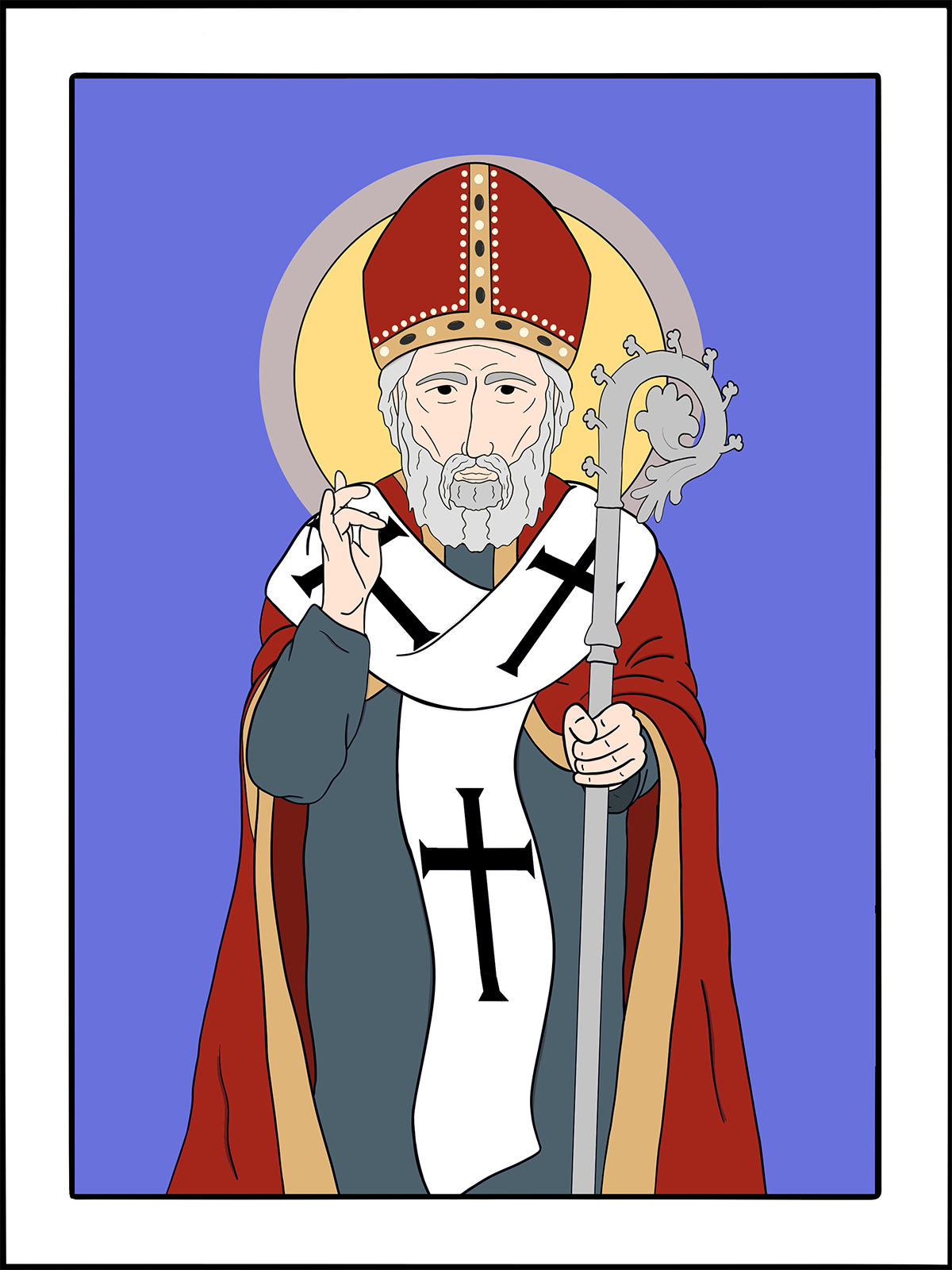
May 19
Dunstan
Archbishop of Canterbury, 988
art by Rev. Kirsten Kohr of Geneva, Ohio Direct your Church, O Lord, into the beauty of holiness, that, following the good example of your servant Dunstan, we may honor your Son Jesus Christ with our lips and in our lives; to the glory of his Name, who lives and reigns with you and the Holy Spirit, one God, now and for ever. Amen.
In the ninth century, under King Alfred the Great, England had achieved considerable military, political, cultural, and even some ecclesiastical recovery from the Viking invasions. It was not until the following century, however, that there was a revival of monasticism and spirituality. In that, the leading figure was Dunstan.
Dunstan was born about 909 into a family with royal connections. He became a monk and, in 943, was made Abbot of Glastonbury. During a year-long political exile in Flanders, he encountered the vigorous currents of the Benedictine monastic revival. King Edgar recalled Dunstan to England in 957, appointed him Bishop of Worcester, then of London; and, in 960, named him Archbishop of Canterbury. Together with his former pupils, Bishops Aethelwold of Winchester and Oswald of Worcester (later of York), Dunstan was a leader of the English church. All three have been described as “contemplatives in action”—bringing the fruits of their monastic prayer life to the immediate concerns of church and state. They sought better education and discipline among the clergy, the end of landed family interest in the church, the restoration of former monasteries and the establishment of new ones, a revival of monastic life for women, and a more elaborate and carefully ordered liturgical worship.
This reform movement was set forth in the “Monastic Agreement,” a common code for English monasteries drawn up by Aethelwold about 970, primarily under the inspiration of Dunstan. It called for continual intercession for the royal house, and emphasized the close tie between the monasteries and the crown.
The long-term effects of this tenth-century reform resulted in the retention of two peculiarly English institutions: the “monastic cathedral,” and the Celtic pattern of “monk-bishops.”
Dunstan is also reputed to have been an expert craftsman. His name is especially associated with the working of metals and the casting of bells, and he was regarded as the patron saint of those crafts. He died at Canterbury in 988.
Excerpted directly from “Lesser Feasts and Fasts 2022,” p. 234-235.

